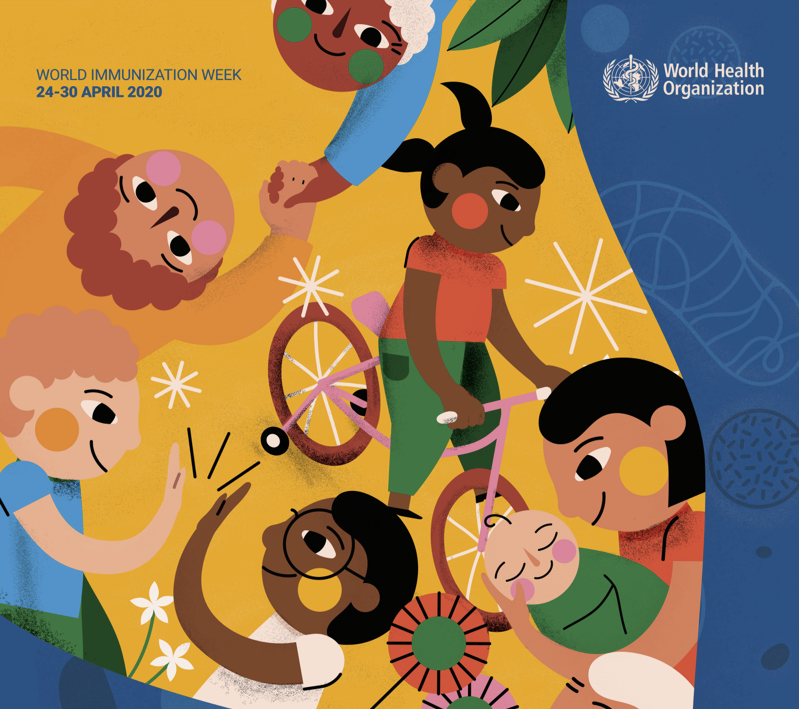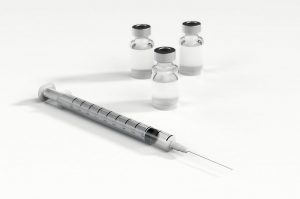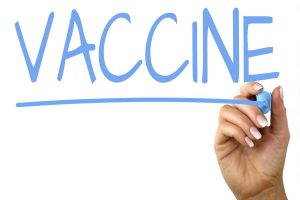A blog written by Dr Sarah Williams, Clinical Immunologist and Course Leader for Biomedical Science
There is a race going on right now to develop a vaccine to protect us all against the devastating consequences of COVID19. A race that is being ‘run’ by amazing scientists around the world and cheered on by us all.

https://www.who.int/news-room/campaigns/world-immunization-week/world-immunization-week-2020
World immunisation week, organised by the World Health Organisation, aims to promote the use of vaccines to protect people of all ages against disease. Even without the current global situation in to which we have all been plunged, the role of vaccination and immunisation was always worth celebrating and promoting.  But with vaccination against COVID 19 being our best shot at returning our disrupted worlds back to our own version of normal, it is perhaps even more vital that we raise awareness of the role of immunisation in protecting and promoting health. And, as we wait and hope, I want to take some time to look at something else – those diseases we are already able to prevent because we have vaccines already. Diseases such as measles.
But with vaccination against COVID 19 being our best shot at returning our disrupted worlds back to our own version of normal, it is perhaps even more vital that we raise awareness of the role of immunisation in protecting and promoting health. And, as we wait and hope, I want to take some time to look at something else – those diseases we are already able to prevent because we have vaccines already. Diseases such as measles.
Measles is deadly. COVID19 is reported to have an R value of around 2. That means, in a totally susceptible population, for every person who contracts the virus, they will infect 2 others. There are some great modelling images out there where you can visualise this. Measles on the other hand has an R value of somewhere around 14. So, in a totally susceptible population each individual that contracts measles will infect 14 other people. Imagine how quickly this disease spreads. There is a great article which has visual models of some disease spread here.
It is not just the infectivity that is different. It is also the death rate. Simplifying work that is ongoing in this area, it has been reported that COVID19 has a death rate of somewhere around 0.66 % in the general public. This means that for every 200 people infected, approximately 1 will die. In the 1920s approximately 30 % of measles cases were fatal. This means that for every 200 people infected, 60 would die. With improved healthcare and the advent of the measles vaccine this dropped to 0.5 % in developed countries, putting it just slightly lower than the reported COVID19 fatality rate.
Those two paragraphs simply translated mean COVID19 spreads reasonably well and kills some people, measles spreads much more rapidly and kills many more. This is not to lessen the impact of COVID19 related deaths, not at all. The whole thing makes for gruesome and tragic watching/reading. Each death will be associated with immeasurable pain and suffering for those left behind but I ask you to consider how much worse this already awful situation could be.

The reason we don’t see such huge numbers of deaths for measles as we are for COVID19 is because the world is not totally susceptible to measles. For a long time measles vaccine coverage was high keeping transmission rates low. As vaccine hesitancy has risen, the uptake of the vaccine has fallen. We cannot and should not sit back and let deadly diseases such as measles re-emerge. It is all of our responsibility to ensure we do everything we can to promote immunisation.
Measles is a deadly, vaccine preventable disease. By ensuring you are vaccinated, if you can be, you are helping to reduce transmission, protect the vulnerable and prevent needless deaths.

